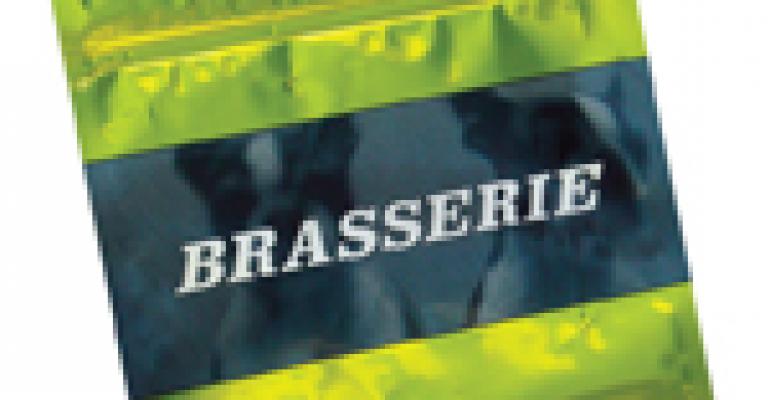As diners seek more ways to economize, a growing number are taking their leftovers home with them, giving operators a marketing opportunity that extends beyond their dining rooms.
In a recent informal survey conducted through the NRN blog Food Writer’s Diary, 40 percent of respondents said they were using doggie bags more frequently than they were a year ago. Looking to capitalize on the change in customer behavior, many restaurateurs say they are rethinking how leftovers are treated.
Giving leftovers more respect “We have recently completely renovated our to-go program,” says Jason Murphy, corporate chef of the nine-unit Blackfinn American Saloon chain, based in Charlotte, N.C. First, the chain jettisoned the old styrofoam clamshells for more attractive, hard plastic heat-and-eat containers, Murphy says. The containers are vented, allowing steam to escape to help prevent crispy foods from getting soggy. Also, hot and cold items are packed separately and dressings are served on the side. The leftover food also is reassembled. “Let’s say it’s a fish dish, and they’ve squeezed their lemon over it,” Murphy says. “The squeezed lemon goes in the garbage and a fresh lemon goes in the box. “We treat it like a regular to-go order. We think providing the value to the guest, and giving them something they can actually use instead of sticking it in the back of the fridge until they throw it out, is worth it.” He says it’s also important that the second meal be enjoyable. “They’re not going to remember that those leftovers got knocked around in a car and were stuck in the back of the fridge,” Murphy says. “They’re going to remember that their leftover food wasn’t that great.” Helping leftovers taste better Also helpful is advice to customers about what to do with the contents of their doggie bags. That’s what Fleming’s Prime Steakhouse & Wine Bar, based in Tampa, Fla., does on their website, The idea came to corporate chef Russell Skall when he met a customer who had only eaten half of her steak but wasn’t planning on taking it home. “I suggested she make steak and eggs for breakfast and gave her a simple recipe and some tips on how to reheat the steak without turning it tough,” he says. The incident made him realize that a website with information like that would be a useful service. David Pogrebin, manager of Brasserie restaurant in New York City, said an attractive doggie bag reminiscent of the restaurant’s logo had been part of the restaurant since it was redesigned several years ago, but he’s going through a lot more of them now. Order more, take it home Pogrebin says even his wealthiest customers have no qualms about taking home doggie bags these days, and that means that if customers are vacillating between a smaller or larger steak, for example, his servers can feel free to remind them that leftovers may make a fine second meal. Michael Maddox, chef-owner of Le Titi de Paris in Arlington Heights, Ill., says his customers often take home appetizers or entrées to save room for dessert, and he makes sure that the to-go containers are easily accessible to servers. He says this proves to be a useful strategy for wine, too. Now that it’s legal in many communities, including his, to package wine to go, many of his guests order more than one bottle to have a glass of each and take the rest home. Marketing on the go Canlis, in Seattle, sends customers home with leftovers packed in microwaveable containers and a sticker with the restaurant’s logo, the date and the contents. John Howie, chef-owner of Seastar, also in Seattle, sends guests home with containers marked with the restaurant’s logo. “We are hoping that this will remind them not only to eat what they have left,” Howie says, “but to remember where it came from.”

